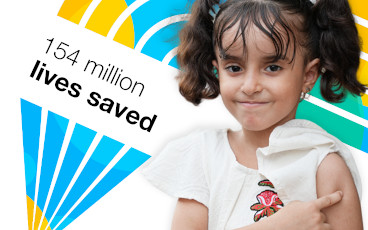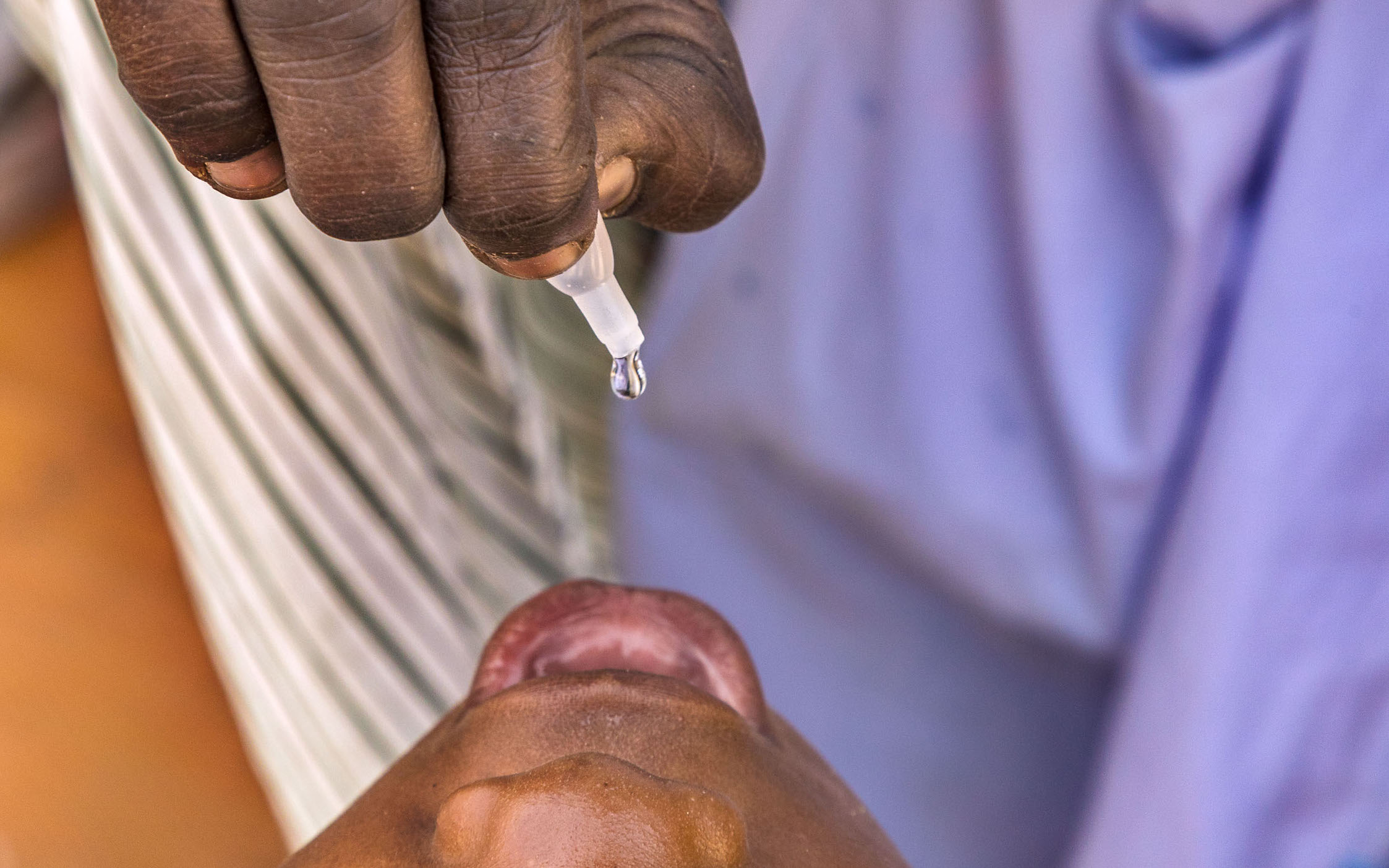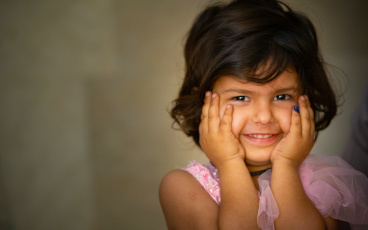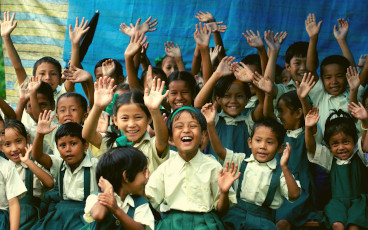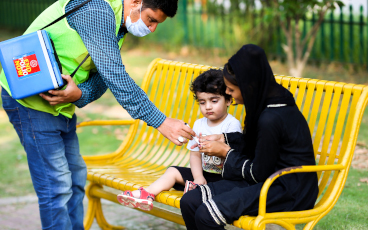Reaching the Last Child
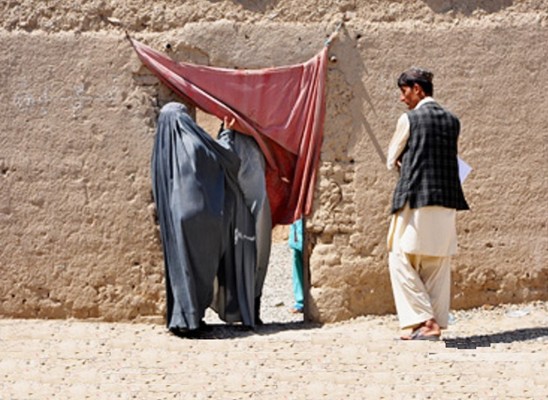
15 June, 2012 – This week marked one year since the world pledged US $4.3 billion to save 4 million lives by 2015 through vaccination. Assessing the progress achieved since this goal was set at its pledging conference last year, GAVI Alliance has released its report card, Delivering on the Promise: Year One. Among other things, this report highlights the fact that one in every five children continues to miss out on basic life-saving vaccines.
The global effort to eradicate polio is leading the way when it comes to reaching the seemingly unreachable – devising the tools and tactics necessary to get to the children who are beyond the reach of traditional health care services.
But if polio is to finally be eradicated, every last child must receive multiple doses of the vaccine. There are small pockets remaining where polio vaccinators haven’t been able to reach children. The Independent Monitoring Board for polio eradication calls these ‘polio sanctuaries’. What does it take to reach every last child? A new series of articles will attempt to answer this question and outline the strategies in place to make sure that no child misses out. This first article will look at reaching the last child in Afghanistan.
It would be easy to assume that children miss out on polio vaccine in Afghanistan because of insecurity. And traditionally, that has been the case.
Around 75% of Afghanistan’s polio cases over the past decade have been within 13 districts of the country’s troubled Southern Region – of which Helmand and Kandahar are a part.
However, insecurity is no longer the main reason why Afghan children miss out on polio vaccine. The good news is that during the polio vaccination campaigns held in March, less than 5% of all children in Southern Region were inaccessible, compared to 30% at the beginning of 2011.
The not-so-good news is that, even with this increased access, vaccination coverage has declined.
This suggests that there are much more mundane reasons for children not receiving the vaccine. Operational issues are now the biggest thorn in the side of Afghanistan’s efforts to eradicate the disease.
Data collected during polio vaccination campaigns has shown that 23% of unvaccinated children in the Southern Region miss out due to ‘social reasons’ – the progamme’s shorthand for reasons that are not related to operational weaknesses but are embedded in a community’s practices and beliefs.
In some of these communities, there are strong traditional beliefs around how and when to vaccinate a child – and so children who are sick, sleeping, or newly born are the ones who are most often excluded. Poorly-trained or supervised vaccinators cannot adequately address these concerns; women vaccinators – more easily accepted into the household – are not always easy to recruit.
Data also shows a major reason for children being missed was simply because their house wasn’t visited – suggesting a shortcoming in planning, vaccinator training and/or supervision.
As part of the global shift into emergency mode, the Afghan Government has already put together a new Emergency Action Plan to set out a strategy to stop the transmission of polio – including a greater focus on management and accountability. One of the steps is to establish new teams at a district level.
Another is stronger management capacity. At a management training held in Kabul on 19-23 of May, participants came up with a motto – “By changing yourself, you can change the world” – and a mission to extend their training to those at the district and sub-district level.
And while sending vaccination teams into conflict and general insecurity is not an option, that does not mean that these children are being abandoned. Instead, tactics have been developed to boost immunity whenever a lull in insecurity allows, such as ‘permanent polio teams’. Recruited from and living within community, these teams are able to pass through and vaccinate even when outsiders cannot enter an area.
The vast majority of this vast and rugged country is polio-free. Vaccinators have braved insecurity, myriad militant groups and harsh terrain to reach children in remote compounds where conservative beliefs hold sway. Less than 4% of Afghan children have never been vaccinated against polio.
The Afghan Government knows where the last children are – in those 13 districts of Southern Region – it’s just a matter of putting the appropriate plans in place and ensuring those responsible for vaccination campaigns are held accountable for the success or failure of their efforts.
But if 300,000 children are missing out on polio vaccine, you can be sure that many more are missing out on many other health interventions. Polio eradication is playing an important role in clearing a path for other health initiatives to follow – including the delivery of other vaccines. Reaching every last child with polio vaccine will not only result in the eradication of polio, but better health outcomes more broadly.
Stay tuned for the next part in the series, which will look at reaching the last child in Gadap, in the megacity of Karachi, Pakistan.


